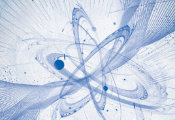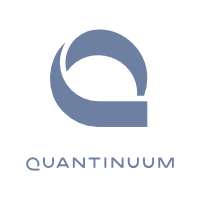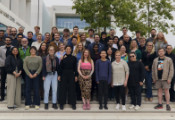From Waste Heat to Quantum Innovation: Advancing Spintronics
December 20, 2024 -- What if the waste heat generated by cars, factories, and even your laptop could be used to realize the next generation of energy-efficient quantum computers? Researchers at Illinois State University, in collaboration with the Air Force Research Laboratory (AFRL), have discovered an effect that may make that possible.
The team led by Dr. Justin Bergfield, associate professor of physics, undergraduate researcher Runa Bennett, and AFRL senior research scientist Dr. Joshua Hendrickson has uncovered how quantum interference—a phenomenon where particles behave like waves and either reinforce or cancel each other—can efficiently generate a “spin-voltage” to control the flow of quantum information. Their findings, published in the prestigious ACS Nano, have the potential to revolutionize energy conversion technologies and enable a wide range of quantum information devices.
Spin is a uniquely quantum property, and spintronics—a field that leverages electron spin instead of charge—is a promising avenue for developing certain types of quantum computers. “Spin-based devices could drastically reduce energy loss and heat generation compared to traditional electronics,” said Bergfield.
“However, unlike the electricity in our homes, which flows easily in response to a wall voltage, spin is much harder to control and requires novel approaches,” he added. “By leveraging the wave-like nature of electrons, we’ve shown that quantum ‘weirdness’ can lead to entirely new ways of harnessing waste heat for advanced technologies.”
The team utilized Illinois State’s High-Performance Computing (HPC) cluster to conduct advanced simulations of circuits composed of metal electrodes connected to single molecules—systems that their collaborators have successfully built and measured.
“Modeling how spin and charge flow in molecule-based devices requires tackling the quantum many-body problem,” said Bergfield. “This involves predicting the behavior of approximately 10²³ interacting electrons—roughly as many as there are stars in the universe. Although solving this problem completely is rarely feasible, we have crafted computational and mathematical techniques that, much like peeling back layers of an onion, have uncovered behaviors that are both surprising and rich with potential for future technologies.”
This advancement paves the way for innovations in quantum computing, secure communication, and energy recovery.
“This project has been incredible,” said Bennett. “It’s exciting to see how quantum mechanics, something so fundamental, can have such practical applications. It’s a step toward addressing some of the most pressing energy challenges of our time.”
The research was graciously funded by the National Science Foundation (Grant DMR-1809024) and marks a critical step toward scalable quantum devices for energy-efficient applications.




































